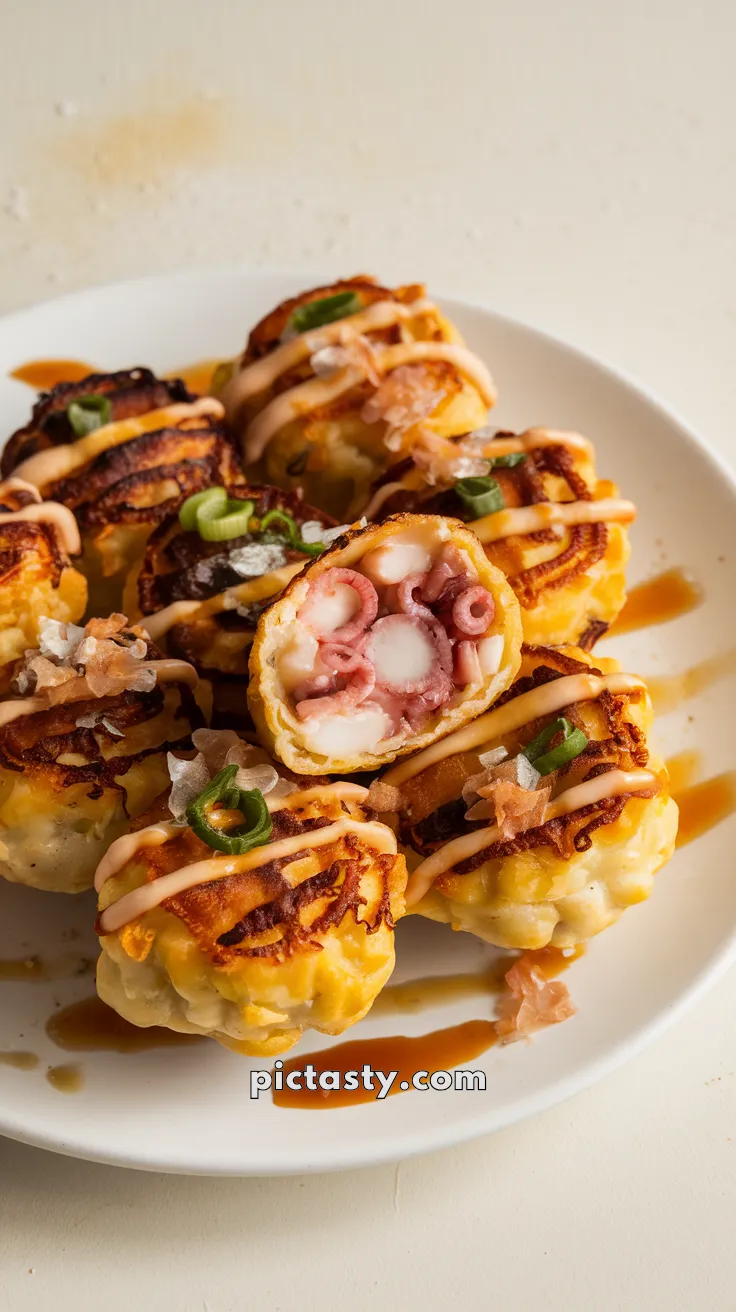Have you ever taken a bite of something so delicious, it felt like a symphony of flavors playing a beautiful melody inside your mouth? That’s how I feel every time I enjoy takoyaki. For those of you unfamiliar with this Japanese delicacy, you might be wondering what it is. Well, brace yourself for an incredible culinary adventure!
Takoyaki, which literally translates to “octopus balls,” are round, bite-sized snacks made from a savory batter and filled with tender octopus pieces. I know, octopus might not be everyone’s first choice in a snack but trust me when I say it’s worth the leap of faith! Just like how a caterpillar transforms into a butterfly, the simple ingredients transform into something truly spectacular. Curious to try it out? Let me show you my favorite takoyaki recipe.
The Origin Story of Takoyaki
Takoyaki was born in the bustling streets of Osaka, a city known for its vibrant food culture. Introduced in the mid-1930s, this street food quickly gained popularity across Japan and eventually the world. The genius behind its creation is a street vendor named Tomekichi Endo.
The charm of takoyaki lies in its simplicity and the contrast of textures. The outside is crisp while the inside is soft and gooey, juxtaposed with the tender pieces of octopus. It’s an experience that keeps you going back for one more bite, and then another, and another.
What Makes Takoyaki Special
One might think that takoyaki is just dough and octopus, but that’s far from the truth. What makes takoyaki special is the complexity of flavors that each bite brings. The savory batter, the umami from the octopus, and the various toppings like pickled ginger, green onions, takoyaki sauce, and mayonnaise come together to create a symphony of flavors.
The process of making takoyaki is an art in itself. The batter is poured into a special takoyaki pan with half-spherical molds, the filling is added, and then, with expert handling of chopsticks, the balls are turned to ensure they cook evenly and achieve that signature round shape. Watching takoyaki being made is almost as enjoyable as eating them.
The Joy of Homemade Takoyaki
There’s something deeply satisfying about making your own takoyaki at home. It’s a fun process that can be turned into an event itself. Invite your friends or family, make the takoyaki together, and enjoy the fruits of your labor. The shared experience of cooking and eating takoyaki only amplifies its taste.
Yes, it might be a bit tricky initially to get the ball-shaping technique right. But once you get the hang of it, there’s no greater joy than seeing those perfect, golden brown takoyaki coming out of the pan. Plus, the advantage of homemade takoyaki is that you can customize them to your liking. Don’t like octopus? Substitute it with shrimp or even cheese. The possibilities are endless.
Ingredients
- For the batter: 2 cups of flour, 2 eggs, 4 cups of dashi soup
- Fillings: Cooked octopus pieces, pickled ginger, green onions
- Toppings: Bonito flakes, takoyaki sauce, mayonnaise, seaweed flakes
Instructions
- Mix the batter ingredients until smooth.
- Heat up the takoyaki pan and pour the batter until the molds are full.
- Add the octopus pieces, pickled ginger, and green onions.
- Use chopsticks to turn the balls until they are cooked evenly and have a golden brown color.
- Top them with bonito flakes, takoyaki sauce, mayonnaise, and seaweed flakes. Enjoy while hot.
Cook and Prep Times
- Prep Time: 30 minutes
- Cooking Time: 15 minutes
Tips for Takoyaki (Octopus Balls)
1. If you don’t have a takoyaki pan, you can also use a muffin pan. The shape might not be perfect, but the taste will surely be there.
2. Make sure to let the takoyaki rest for a few minutes after they come out of the pan. They will be extremely hot.
3. Experiment with different fillings and toppings, and find your favorite combination.
Why This Recipe is a Must-Try
This takoyaki recipe is a must-try because it’s not just about the end product, but the whole journey of making them. It’s a fun, engaging process that results in a delicious snack that’s a perfect balance of textures and flavors. Plus, it’s a great way to introduce yourself to Japanese street food culture.
Nutrition Information
- Calories: 230 kcal per serving

